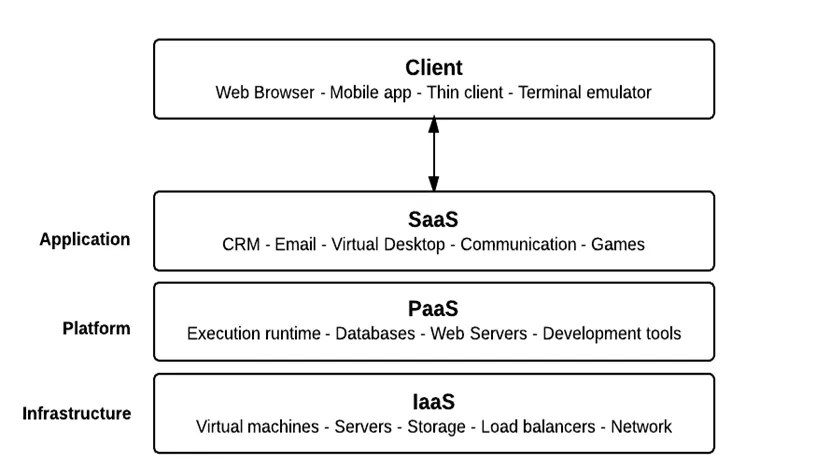What are the types of cloud services?

As cloud computing has developed, different vendors offer clouds that have various services associated with them. The portfolio of services offered adds another set of definitions called the service model.
Three service types have been universally accepted:
Infrastructure as a Service (IaaS)
Platform as a Service (PaaS)
Software as a Service (SaaS)

Service models
Infrastructure as a Service (IaaS)
Infrastructure as a Service (IaaS) is a cloud computing service model in which hardware is virtualized in the cloud. In this model, the service vendor owns the equipment: servers, storage, network infrastructure, etc.
The developer creates virtual hardware on which to develop applications and services. Essentially, an IaaS vendor has created a hardware utility service where the user provisions virtual resources as required.
e.g. Amazon Elastic Compute Cloud (EC2), Eucalyptus, GoGrid, FlexiScale, Linode, RackSpace Cloud, and Terremark are different IaaS cloud service providers.
Benefits of IaaS
- Allows customers to access the resources from their organization premises.
- Allows customers to run the virtual machines according to their requirements.
- Charges customers on the basis of the system resources accessed by them.
- Guarantees the specific level of the system performance to the customers through service-level agreements.
- Provides hardware for firewalls, load balancing, and routers.
- Allows customers to easily scale up or down the resources on the basis of their needs.
Limitations of IaaS
- Most expensive, since the customer is now leasing a tangible resource, the provider can charge for every cycle, a bit of RAM, or disk space used.
- The customer is responsible for backups.
- Unlike with SaaS or PaaS, the customer is responsible for all aspects of VM Management.
- Still, no control over which server or the physical location of the VM.
Platform as a service (PaaS)
Platform as a service (PaaS) is a category of cloud computing services that provides a platform allowing customers to develop, run, and manage applications without the complexity of building and maintaining the infrastructure typically associated with developing and launching an app.
PaaS provides an environment for developers and companies to create, host, and deploy applications, saving developers from the complexities of the infrastructure side (setting up, configuring, and managing elements such as servers and databases).
e.g. AWS Elastic Beanstalk, Windows Azure, Heroku, Force.com, Google App Engine, Apache Stratos, OpenShift
Benefits of PaaS
- Quick testing and deployment
- Dynamic allocation of feature or service
- Increased focus on business and boost to internal entrepreneurship
Limitations of PaaS
- Data security provided by PaaS is low
- Limited flexibility
- Customer captivity towards choosing the platform of their need.
- Problems of integration with in-house systems and applications
Software as a Service (SaaS)
Software as a Service is a software licensing and delivery model in which software is licensed on a subscription basis and is centrally hosted. It is sometimes referred to as “on-demand software”. SaaS is typically accessed by users using a thin client via a web browser.
The vast majority of SaaS solutions are based on a multitenant architecture. To support scalability, the application is installed on multiple machines.
e.g. Google Workspace, Dropbox, Salesforce, Cisco WebEx, Concur, GoToMeeting
Benefits of SaaS
- Flexible payments of software.
- Scalable usage of services and features.
- Automatic updates and management of software.
- Accessibility and persistence of application.
Limitations of SaaS
- Compliance with where the data is stored due to the rules and regulations of different countries
- The performance of the SaaS depends on internet connectivity.
- SaaS application runs at a slightly slower speed than client/server application.